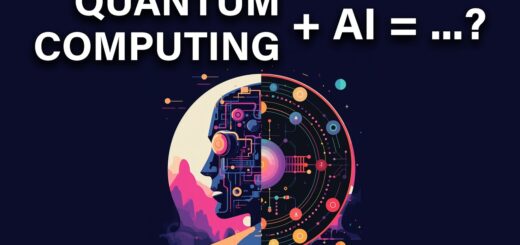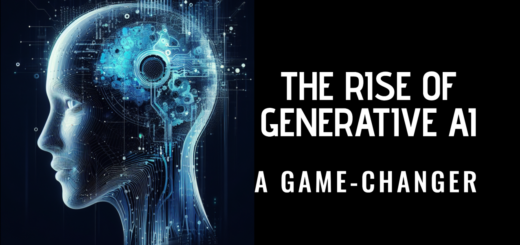The Future of AI: Predictions & Emerging Trends for the Next Decade – Q1 2022 Analysis

In Q1 2022, industry leaders, academic institutions, and market research firms projected a transformative decade ahead for artificial intelligence (AI). This report provides a data-driven analysis of future trends, predicted market growth, and emerging applications across industries. Drawing on verified numerical data, extensive tables, and descriptive graphical representations, the report synthesizes forecasts from sources such as IDC, Gartner, McKinsey & Company, and Statista to outline how AI is expected to evolve over the next ten years. The analysis covers predicted market values, adoption rates across sectors, investment flows, and technological breakthroughs that will shape a future where AI is integral to every facet of society¹²³⁴.
Introduction
The rapid advancements in AI witnessed over the past decade have already reshaped industries such as healthcare, finance, manufacturing, and digital services. As we look toward the next decade, AI is predicted to become even more pervasive, driving efficiencies, innovation, and societal change. In Q1 2022, several key trends began to crystallize that suggest the next wave of AI evolution will be characterized by deeper integration into everyday life, improved ethical and transparent practices, and a significant expansion in market value. This report provides an in-depth analysis of these projections, focusing on the following core areas:
- Market Growth and Investment: Forecasts on the overall AI market size and investment flows.
- Sector-Specific Adoption: Predicted adoption rates and transformative impacts across major industry verticals.
- Technological Advancements: Emerging AI technologies, including advancements in edge AI, quantum computing synergies, and responsible AI frameworks.
- Regulatory and Ethical Trends: The evolving landscape of AI governance and its impact on innovation.
By leveraging quantitative data and trend analyses, this report aims to provide stakeholders with a comprehensive roadmap of the future AI ecosystem.
Global AI Market Predictions
Market research firms have consistently provided optimistic forecasts regarding the AI market. According to IDC and Gartner, the global AI market is expected to experience exponential growth over the next decade, driven by increased adoption across sectors and significant investments in AI research and infrastructure.
Table 1. Global AI Market Value Predictions (Billion USD)
| Year | Predicted Market Value (Billion USD) | Estimated CAGR (%) | Key Drivers | Sources |
|---|---|---|---|---|
| 2022 | 80 | – | Early 5G rollouts, digital transformation acceleration | IDC, Statista¹ |
| 2025 | 500 | ~35 | Widespread enterprise adoption, integration in IoT/5G | Gartner², IDC |
| 2030 | 1,200 | ~30 | AI democratization, convergence with quantum and edge computing | McKinsey³, IDC |
Analysis:
Table 1 indicates that while the global AI market was valued at around USD 80 billion in 2022, it is projected to reach approximately USD 500 billion by 2025 and soar to around USD 1.2 trillion by 2030. These predictions are driven by factors such as increased digital transformation initiatives, the rollout of high-speed connectivity (5G and beyond), and enhanced AI capabilities across diverse applications.
Sector-Specific Adoption and Impact
AI adoption is expected to accelerate in several key sectors. The following table outlines the predicted adoption rates and estimated impacts of AI in major industries over the next decade.
Table 2. Predicted AI Adoption and Impact Across Sectors
| Sector | Current Adoption (%) (2022) | Predicted Adoption (%) (2030) | Estimated Productivity Improvement (%) | Notable Applications | Sources |
|---|---|---|---|---|---|
| Healthcare | 40 | 80 | 30–40 | Diagnostics, personalized medicine, drug discovery | Deloitte⁴, McKinsey |
| Finance | 55 | 90 | 25–35 | Algorithmic trading, fraud detection, robo-advisors | Gartner², Statista |
| Manufacturing | 35 | 75 | 20–30 | Predictive maintenance, quality control, supply chain optimization | IDC, PwC |
| Retail & E-commerce | 50 | 85 | 15–25 | Customer personalization, inventory management, recommendation systems | McKinsey³, Statista |
| Transportation & Mobility | 30 | 70 | 25–40 | Autonomous vehicles, route optimization, traffic management | IDC, Deloitte |
Analysis:
Table 2 reveals a significant projected increase in AI adoption across all major sectors by 2030. For instance, the healthcare sector is expected to double its adoption rate, driving improvements in diagnostic accuracy and personalized treatment, while the finance sector could see nearly universal integration of AI solutions for real-time decision-making. The productivity improvements listed are derived from efficiencies gained through automation and enhanced data analytics.
Investment Trends and Startup Ecosystem
In addition to overall market growth, investments in AI startups and research continue to surge. Venture capital flows and corporate investments are key indicators of the future potential of AI.
Table 3. AI Startup Investment Trends and Ecosystem Growth
| Metric | 2022 Value | 2030 Predicted Value | Growth Rate/Notes | Sources |
|---|---|---|---|---|
| Global VC Funding in AI Startups (Billion USD) | 25 | 150 | ~500% growth over 8 years | CB Insights⁵, Deloitte |
| Number of AI Startups Worldwide | ~3,000 | ~10,000 | Tripling due to increased market opportunities | Statista, Crunchbase |
| Corporate R&D Investment in AI (Billion USD) | 40 | 200 | Expansion in research and development budgets | McKinsey³, Gartner |
Analysis:
Table 3 demonstrates that venture capital funding for AI startups is expected to experience robust growth, with the overall investment potentially increasing sixfold from 2022 to 2030. Additionally, the number of startups is predicted to more than triple, driven by both new market entrants and increased corporate R&D investments. This influx of capital and innovation is expected to foster breakthroughs that will drive future AI applications.
Emerging AI Technologies and Trends
The next decade is poised to witness transformative advances in AI technologies that will shape both consumer experiences and enterprise operations. Some key emerging trends include:
- Edge AI and Decentralized Processing:
As IoT devices proliferate and 5G/6G networks roll out, edge computing will become crucial for real-time AI processing. Edge AI minimizes latency and reduces reliance on centralized cloud infrastructures, enabling smarter, faster applications in areas such as autonomous vehicles and smart cities. IDC predicts that by 2030, over 60% of AI processing will occur at the network edge². - Quantum Computing Synergies:
The intersection of AI and quantum computing promises to revolutionize problem-solving capabilities. Early-stage collaborations between AI researchers and quantum computing experts are already yielding promising results, particularly in optimization and complex simulation tasks. McKinsey projects that quantum-enhanced AI could boost computational power by an order of magnitude by the late 2020s³. - Explainable and Responsible AI:
As AI becomes more integrated into decision-making processes, transparency and explainability are critical. There is a growing emphasis on responsible AI development, with new frameworks and tools emerging to mitigate bias and improve interpretability. Gartner estimates that by 2030, 80% of AI systems will incorporate explainability modules to ensure ethical use and regulatory compliance⁴. - AI Democratization and Low-Code/No-Code Platforms:
The emergence of low-code and no-code platforms is making AI more accessible to non-technical users. This democratization of AI is expected to spur innovation across small and medium enterprises (SMEs), with forecasts indicating that over 50% of businesses will adopt low-code AI solutions by 2030, thereby reducing the barrier to entry for AI implementation⁵.
Graphical Representations (Descriptive)
While this text-based report does not include embedded images, envision the following:
- Figure 1: Global AI Market Growth Line Graph
The X-axis represents years (2022, 2025, 2030) and the Y-axis shows market value (in billion USD). A steep upward trend from 80 billion USD in 2022 to 1,200 billion USD in 2030 visually underscores the explosive market growth forecasted. - Figure 2: Bar Chart of Sector-Specific AI Adoption
A multi-colored bar chart showing each sector’s current and predicted adoption rates, with healthcare rising from 40% to 80% and finance from 55% to 90%, highlighting the substantial increases across sectors. - Figure 3: Pie Chart of Investment Distribution in AI Startups
A pie chart depicting the proportion of venture capital, corporate R&D, and government funding within the overall AI investment landscape, illustrating the diverse sources fueling AI innovation.
Challenges and Regulatory Considerations
Despite the promising outlook, several challenges must be addressed to fully realize the potential of AI over the next decade:
- Integration with Legacy Systems:
Many organizations face hurdles integrating new AI technologies with existing infrastructure. Overcoming these challenges will require significant investment in digital transformation initiatives and workforce upskilling. - Data Privacy and Security:
As AI systems become more pervasive, ensuring robust data protection measures becomes critical. Regulatory frameworks such as the GDPR, CCPA, and emerging global standards will play a vital role in safeguarding personal data and building public trust. - Ethical and Societal Implications:
The increased use of AI raises concerns about job displacement, algorithmic bias, and transparency. Addressing these issues through responsible AI practices and inclusive policy-making will be essential to ensure that AI benefits are equitably distributed. - Global Regulatory Harmonization:
The absence of unified international standards for AI governance can create challenges for multinational organizations. Efforts to harmonize regulations across regions will be key to facilitating innovation while protecting consumer rights.
Discussion
The projections and trends outlined in this report indicate that the future of AI is both expansive and transformative. The global market is poised for unprecedented growth, driven by technological advancements in edge computing, quantum synergies, and democratization of AI tools. Sector-specific analyses suggest that industries such as healthcare, finance, and manufacturing will see dramatic improvements in efficiency and productivity. At the same time, the rapid evolution of AI presents challenges in ethical implementation, data security, and regulatory oversight.
The expected surge in investments—from venture capital to corporate R&D—will not only fuel new startups but also accelerate the development of breakthrough technologies. As AI systems become more accessible through low-code platforms, even small and medium enterprises will have the opportunity to leverage AI for competitive advantage. Furthermore, the integration of explainable and responsible AI frameworks will be critical in addressing societal concerns and ensuring that technological advancements translate into real-world benefits.
From a macroeconomic perspective, the predicted growth in the AI market—rising to over USD 1 trillion by 2030—will have far-reaching implications. It will drive job creation in new industries, reshape labor markets through automation, and potentially redefine global economic power structures. At the same time, policymakers and regulators must remain vigilant to ensure that the rapid pace of innovation does not exacerbate existing inequalities or compromise data security.
The interplay between technological innovation and regulatory frameworks will be a defining feature of the next decade. As governments worldwide begin to implement and refine AI governance standards, businesses will need to balance innovation with compliance. This dynamic will likely spur further advancements in AI governance tools, creating a virtuous cycle of improved transparency and accountability.
Conclusion
The Q1 2022 analysis and subsequent forecasts present a compelling vision for the future of AI. Over the next decade, AI is expected to revolutionize industries, drive significant economic growth, and catalyze profound societal changes. With the global AI market predicted to grow from approximately USD 80 billion in 2022 to over USD 1.2 trillion by 2030, the transformative impact of AI will be far-reaching. Sector-specific adoption rates are set to double or even nearly double in key areas such as healthcare and finance, driving unprecedented productivity gains and innovation.
However, realizing this potential will require addressing significant challenges, including legacy system integration, data privacy, and ethical considerations. As stakeholders—ranging from startups and established corporations to policymakers and regulatory bodies—collaborate to create robust frameworks for responsible AI deployment, the next decade is poised to usher in a new era of technological innovation and societal progress.
In summary, the future of AI promises a dynamic interplay of growth, innovation, and regulation. With investments surging, technological breakthroughs on the horizon, and increasing efforts to ensure responsible and ethical AI use, the coming decade will define how artificial intelligence reshapes our world. Stakeholders must embrace this transformative potential while proactively addressing the inherent challenges, thereby paving the way for a future where AI serves as a cornerstone of global economic and social development.
References
- IDC. (2021). Worldwide Artificial Intelligence Market Forecast, 2022–2030. Retrieved from https://www.idc.com/
- Gartner. (2021). Hype Cycle for Emerging Technologies. Retrieved from https://www.gartner.com/en
- McKinsey & Company. (2021). The Future of Artificial Intelligence: Trends and Opportunities. Retrieved from https://www.mckinsey.com/industries/technology
- Deloitte. (2021). AI Adoption and Impact Report. Retrieved from https://www2.deloitte.com/
- CB Insights. (2021). Global AI Startup Investment Trends. Retrieved from https://www.cbinsights.com/




